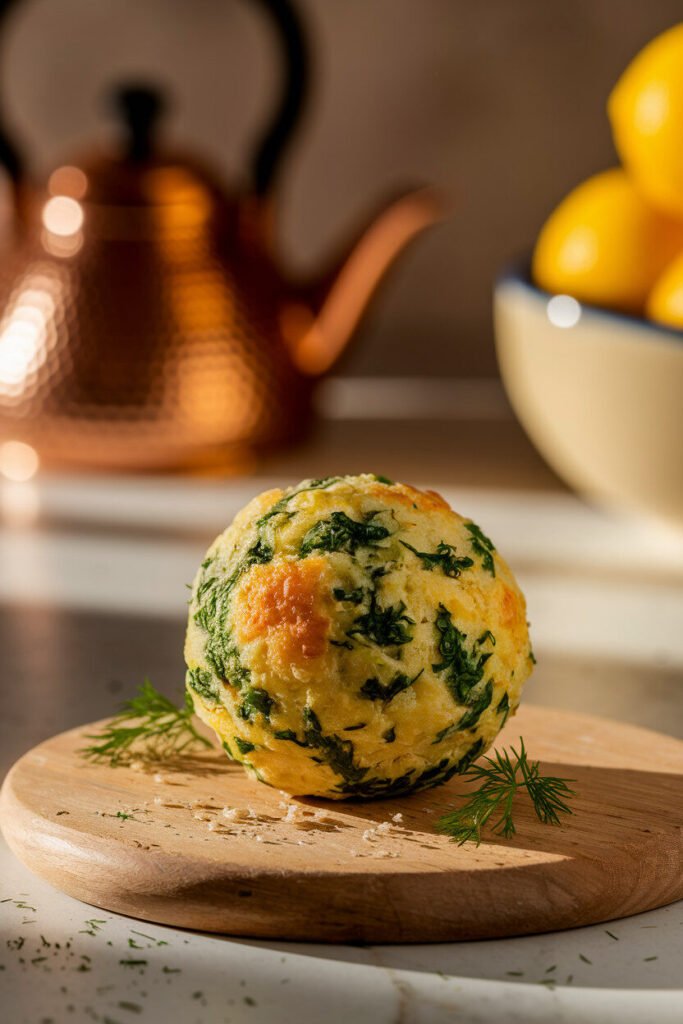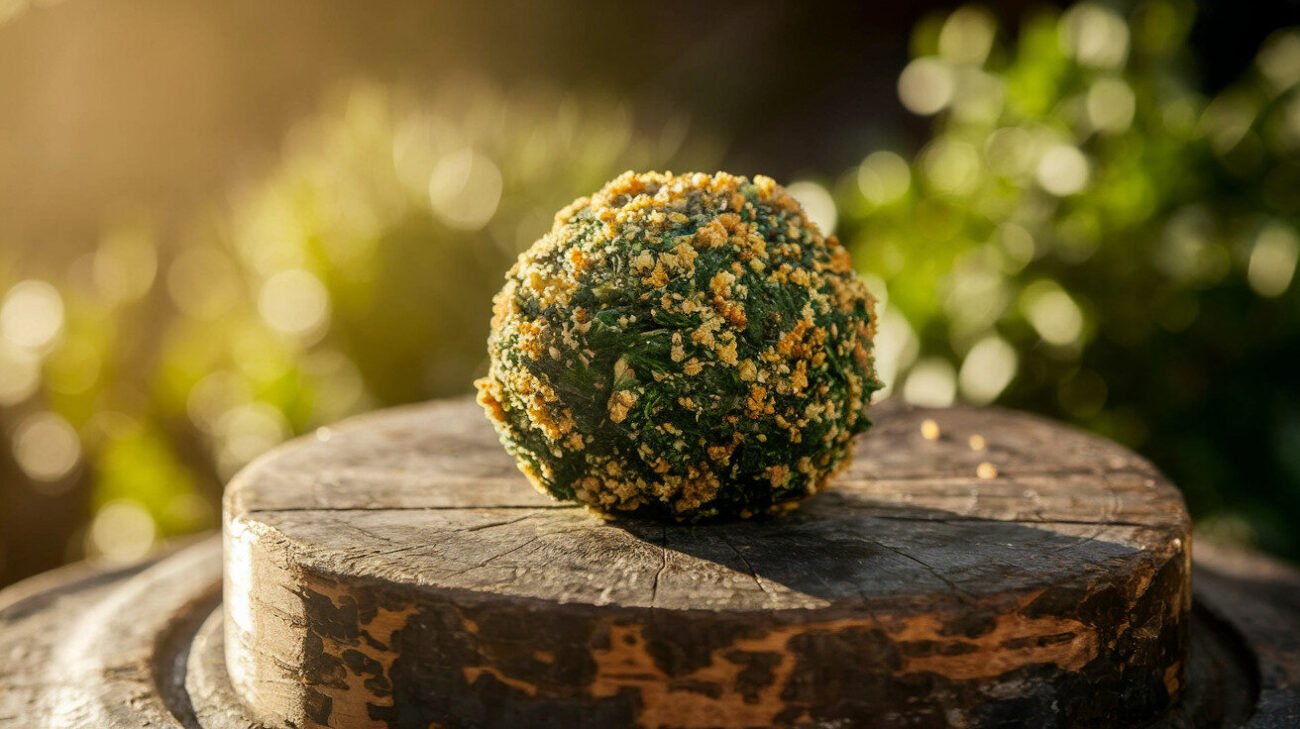After testing more spinach ball recipes than I can count—some disappointingly dry, others frustratingly dense—I finally cracked the code. This isn’t just another recipe; it’s the culmination of understanding the science behind the ingredients. The magic lies not in some secret ingredient, but in the method and the ratios. I’m talking about a spinach ball that’s consistently moist on the inside with a perfectly golden, slightly crisp exterior every single time. This is the version I’ve standardized for my own catering clients and the one I’m proud to share with you. Forget the hit-or-miss internet versions. Let’s get into the why and how.
Why This Spinach Balls Recipe is a Game-Changer
Most spinach ball recipes get the basic idea right but miss the mark on texture and flavor depth. They’re often just… fine. After deconstructing the components, I found two critical levers that most recipes ignore: moisture management and binder balance. Get these wrong, and you’re left with either a soggy mess or a dry, breadcrumb-heavy puck. Get them right, and you have something truly special.
The Secret to Perfect Texture Every Time
The single biggest mistake? Improper spinach drying. I don’t care if you use frozen or fresh; if you don’t remove enough water, the starch in the stuffing mix and breadcrumbs over-hydrates, creating a gummy, wet mixture that steams instead of bakes. You need an aggressive drying technique. I use a salad spinner after wringing the spinach in a clean kitchen towel. It feels like overkill, but it’s the difference between a good spinach ball and a great one.
The second texture secret is the rest period. Once mixed, the dough must rest for at least 30 minutes, covered, in the refrigerator. This isn’t a suggestion—it’s mandatory. This allows the dry ingredients to fully hydrate and the flavors to meld, resulting in a cohesive mixture that holds its shape and bakes evenly. Skipping this step is why your spinach balls might have fallen apart before.
Beyond the Appetizer: Versatile Serving Suggestions
Sure, they’re a fantastic passed hors d’oeuvre. But limiting them to that is a disservice. I serve these in at least three other ways professionally.
For a weeknight dinner, I’ll make larger versions and serve them over a lemony cream pasta, almost like vegetarian meatballs. The way they soak up the sauce is incredible. For a salad, I’ll slice warm spinach balls and place them on a bed of bitter greens with a bright vinaigrette; the warm/cold contrast is restaurant-level. And for breakfast, a couple alongside scrambled eggs is a game-changer. They freeze so well that having a stash for these purposes is just smart kitchen management.
Sourcing Your Ingredients Like a Pro
The quality of your output is dictated by the quality of your inputs. This doesn’t mean you need to spend a fortune, but you need to make smart choices. I’ve tested this with every variable, and here’s what truly matters.
Choosing the Right Spinach: Fresh vs. Frozen
This is the most common question I get. Here’s my professional take: For consistency and efficiency, I almost always use frozen chopped spinach. Why? The water content is more predictable, and it’s already broken down, which integrates into the mixture more evenly. Fresh spinach requires significant wilting and chopping, introducing more variables and opportunities for moisture imbalance.
That said, if you use fresh, you must wilt it in a dry pan until it has significantly reduced in volume, then chop it finely. Regardless of your choice, the non-negotiable step is that thorough drying I mentioned earlier. The brand of frozen spinach doesn’t matter much, but I avoid the ones packed in blocks and prefer the loose-leaf frozen varieties for easier portioning.
The Cheese Equation: Finding Your Perfect Flavor Profile
The classic Parmesan is great, but it’s just the beginning. The cheese here serves two purposes: saltiness/umami and fat content, which contributes to mouthfeel. I use a blend. My standard is two-thirds freshly grated Parmesan (never the pre-shredded stuff with anti-caking agents) and one-third Pecorino Romano for a sharper, saltier kick.
For a richer, more melty interior, substituting half the Parmesan with a low-moisture Mozzarella is brilliant. For a sharper profile, an aged Asiago works wonderfully. The key is to grate it yourself. Pre-shredded cheese is coated and won’t bind or melt into the mixture properly, creating a grainy texture.
The Binder Breakdown: Why Stuffing Mix Isn’t Just for Turkey
This is the controversial one. Many purists insist on fresh breadcrumbs. I’ve tested both extensively, and for this application, a seasoned dry stuffing mix (like Pepperidge Farm) is superior. It’s not a cheat; it’s a strategic choice. The stuffing mix contains dried vegetables, seasonings, and precisely engineered starches that create a more complex flavor and a more stable structure than plain breadcrumbs ever could.
It absorbs moisture predictably, leading to that perfect, non-crumbly texture. If you must substitute, use 1 1/4 cups of panko breadcrumbs mixed with 1 teaspoon of onion powder, 1/2 teaspoon of garlic powder, and a good pinch of dried parsley. But honestly? Just use the stuffing mix.
The Step-by-Step Method for Flawless Spinach Balls
Here is the complete recipe with instructions based on the professional techniques outlined above.
Ingredients:
- 2 (10 oz) packages frozen chopped spinach, thawed
- 2 large eggs, lightly beaten
- 1/2 cup (1 stick) unsalted butter, melted and slightly cooled
- 1 cup seasoned dry stuffing mix
- 1 cup freshly grated Parmesan cheese
- 1/2 cup finely minced yellow onion
- 2 cloves garlic, minced
- 1/2 teaspoon salt (adjust based on saltiness of your cheese)
- 1/4 teaspoon black pepper
- 1/4 teaspoon dried thyme
- 1/4 teaspoon nutmeg (freshly grated if possible)

Instructions:
Mastering the Squeeze: Managing Moisture Content
- Thaw & Drain: Place the thawed spinach in a clean kitchen towel or several layers of cheesecloth. Twist the cloth tightly over the sink and squeeze with all your might until no more water drips out. You will be shocked at how much liquid is released. I sometimes do this twice with a fresh towel. The spinach should be crumbly and almost dry to the touch.
- Sauté Aromatics: In a small skillet over medium heat, cook the minced onion in a tiny bit of butter or oil until softened and translucent, about 4-5 minutes. Add the minced garlic and cook for just 30 seconds more until fragrant. This step removes raw moisture and mellows the flavors, a pro-tip that prevents a bitter, raw onion taste in the final product. Let this mixture cool slightly.
Achieving the Ideal Scoop and Shape
- Combine: In a large mixing bowl, combine the thoroughly dried spinach, the onion-garlic mixture, stuffing mix, Parmesan cheese, salt, pepper, thyme, and nutmeg. Stir to combine.
- Bind: Pour in the slightly cooled melted butter and the beaten eggs. Use a fork or your hands to mix until everything is evenly moistened and cohesive. This will take a minute or two.
- Rest: This is the critical step. Cover the bowl tightly with plastic wrap and refrigerate for at least 30 minutes, or up to 4 hours. This allows the breadcrumbs to fully hydrate and the mixture to firm up.
Baking vs. Air Frying: A Side-by-Side Comparison
- Preheat and Portion: Preheat your oven to 350°F (175°C). Line a baking sheet with parchment paper. Using a small cookie scoop (about 1.5 tablespoons), portion the mixture. Roll each portion firmly into a tight ball. The scoop ensures uniform size for even cooking.
- Bake (Standard Method): Arrange the balls on the prepared baking sheet about an inch apart. Bake for 20-25 minutes, or until the bottoms are golden brown and the tops are firm to the touch.
- Air Fry (Alternative Method): For a crispier exterior, air fry at 375°F (190°C) for 10-12 minutes, shaking the basket halfway through. They cook faster this way and get a bit more color all over.
Let them cool for a few minutes on the sheet before serving, as they will be very hot inside and need a moment to set.
Frequently Asked Questions
Can I make spinach balls ahead of time and freeze them?
Absolutely, and I do this constantly. You have two options. First, you can freeze the unbaked balls on the baking sheet until solid, then transfer them to a freezer bag. Bake directly from frozen, adding 5-10 minutes to the cooking time. Second, you can freeze them after baking. They reheat remarkably well, making them the ultimate convenient appetizer.
What’s the best way to reheat spinach balls to keep them crispy?
The oven or air fryer is your best friend here. Never the microwave—it will make them soft and steamy. To reheat, place them on a baking sheet in a 350°F (175°C) oven for 10-15 minutes until hot, or in an air fryer at 375°F (190°C) for 5-7 minutes. This will restore the crispy exterior.
Can I make gluten-free or dairy-free spinach balls?
You can, with adjustments. For gluten-free, use a GF stuffing mix or GF panko breadcrumbs with the additional seasonings mentioned earlier. For dairy-free, replace the Parmesan with a savory, hard vegan cheese alternative (nutritional yeast alone won’t provide the right texture) and use a vegan butter or olive oil. The texture will be slightly different, but still very good.
My spinach balls turned out soggy. What went wrong?
Ninety-nine times out of a hundred, this is due to insufficient spinach drying. You really, truly must squeeze out every last drop of water you can. The second potential culprit is under-measuring the dry stuffing mix—make sure you’re using a proper dry measuring cup (scoop and level).
What are some good dipping sauces for spinach balls?
While they’re fantastic on their own, I love them with a creamy marinara for dipping. A lemon-dill yogurt sauce (Greek yogurt, lemon zest, fresh dill, salt) is also a fantastic, bright contrast. For something richer, a quick aioli or even a spicy ranch works beautifully.
Can I substitute the stuffing mix with something else?
As discussed, I highly recommend against it for the best results. However, if you must, the 1:1 substitution with seasoned panko breadcrumbs (with added herbs and onion/garlic powder) is your next best option. The texture will be slightly less complex and more uniform, but it will work.
